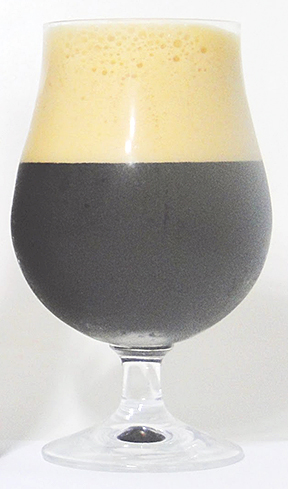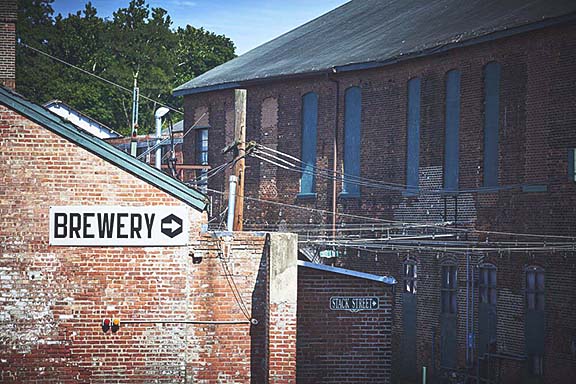In like a Lion, Out like a Goat?
March can certainly be a tricky month; Spring is so close but at times feels so far away in CNY this time of year. Regardless, by now we are all longing for warmer days ahead and the ability to emerge from our winter dens and into the greenery. Luckily, we don’t have to rely on Mother Nature in order to switch from our winter warmers and stouts to something lighter and more refreshing as the temperatures creep upwards.
 A rather traditional style of spring beer would be a Bock. Bock beer is German in origin and there are distinct subcategories that include Maibock, Helles Bock, Heller Bock, Doppelbock, Weizenbock, and Eisbock. This style of beer was first brewed in the northern German town of Einbeck in the 14th century. From here, the brew eventually migrated its way to Munich where it was adapted into the Bock we know today. Due to the different dialects of German in the northern vs. the southern part of the country, “Einbeck” was pronounced differently in Munich; “ein Bock,” which translates to “billy goat” and thus why labels and advertising motifs of many Bock beers feature goats, and of course how Bock earned its name.
A rather traditional style of spring beer would be a Bock. Bock beer is German in origin and there are distinct subcategories that include Maibock, Helles Bock, Heller Bock, Doppelbock, Weizenbock, and Eisbock. This style of beer was first brewed in the northern German town of Einbeck in the 14th century. From here, the brew eventually migrated its way to Munich where it was adapted into the Bock we know today. Due to the different dialects of German in the northern vs. the southern part of the country, “Einbeck” was pronounced differently in Munich; “ein Bock,” which translates to “billy goat” and thus why labels and advertising motifs of many Bock beers feature goats, and of course how Bock earned its name.
Bock is considered a spring-type beer because it is associated with Lent. Doppelbock, a dark, sweet, heavy, strong Bock that is generally high in alcohol content (7-12%) was traditionally brewed by Franciscan monks near Munich. During the Lenten season, these monks fasted during the Feast of the Holy Father – an 8-day festival at the beginning of April – and the Doppelbock that they brewed and named “Sankt Vaterbier” or “Holy Father beer” was the drink of choice while the food was forbidden. Essentially, it was “liquid bread” due to its filling, sweet nature. Later on, this monastery’s brewery was sold and purchased by a brewer and the Doppelbock’s popularity swelled.
Of course, not all Bocks are dark and heavy; the Maibock, Helles Bock, and Heller Bock are still strong in character, but paler in color and conclude with heavier hopped flavors. Traditional Biergarten brewed these Bocks to usher in spring and warmer weather. It is said that Munich’s Hofbräu brewery created the first Maibock brew that was a twist on the traditional Einbeck brew that has been aforementioned, and in keeping with yearly tradition, the original Hofbräuhaus in Munich taps its first barrel of Maibock during the last week of April to herald in the month of May.

Eisbock or “ice bock” hearkens from the Kulmbach district of Germany and is created by partially freezing a Doppelbock and removing the water content (ice) in order to further concentrate the flavor and increase the alcohol content, which can range from 9-13%. The resultant brew is dark and rich with prominent flavors of prunes, plums, and raisins. Weizenbock is the wheat version of Bock and traditionally utilizes 40-60% wheat instead of 100% barley. There are both pale and darker versions but both are malt-centric with medium-to-full bodies with the alcohol content ranging from approximately 6-9%.
Likely one of the most popular and widely available Maibock or Helles Bock-style brews is Dead Guy Ale (6.8% ABV) by Rogue Ales out of Newport, OR. Interestingly enough, this brew has actually been around for over 25 years! The beer is a balanced mixture of subtly bitter hops with slightly sweet caramel maltiness finishing clean and dry. If you’re diving head-first into the Bock beer world, this is a definitely tried-and-true brew to start with.
A little closer to home, Industrial Arts Brewing in Garnerville, NY located in the lower Hudson Valley region, brews a Helles Bock each spring known as Spring Landscape. This beer is created using 100% New York State ingredients including 6-row malted barley with a small amount of lightly kilned malt produced by Hudson Valley Malt, and Willamette and Glacier hops grown by Pedersen Farms. The resulting brew contains bready and toasty characteristics from the malts combined with floral, minty, and slightly citric notes from the hops; and at 6.2% ABV, it’s an easy beer to drink.

As with other years’ versions of Spring Landscape the total proceeds of said beer are donated to charity. This year, the worthy recipient will be the Rockland Farm Alliance whose mission is to “conserve farmland in Rockland and beyond by bringing communities together through local, sustainable farming projects and agricultural education programs.” Spring Landscape is set to be released during the first week of March and will be available for purchase throughout New York, New Jersey, and Connecticut. So be on the lookout! (I know I will be!)
With the weather and seasonal changes in March, we too are likely to start getting an itch for change, and that clean, crisp, freshness that Spring ushers in and that extends to our palates and what’s in our pint glasses. Cheers to bright Bocks and better days ahead!












